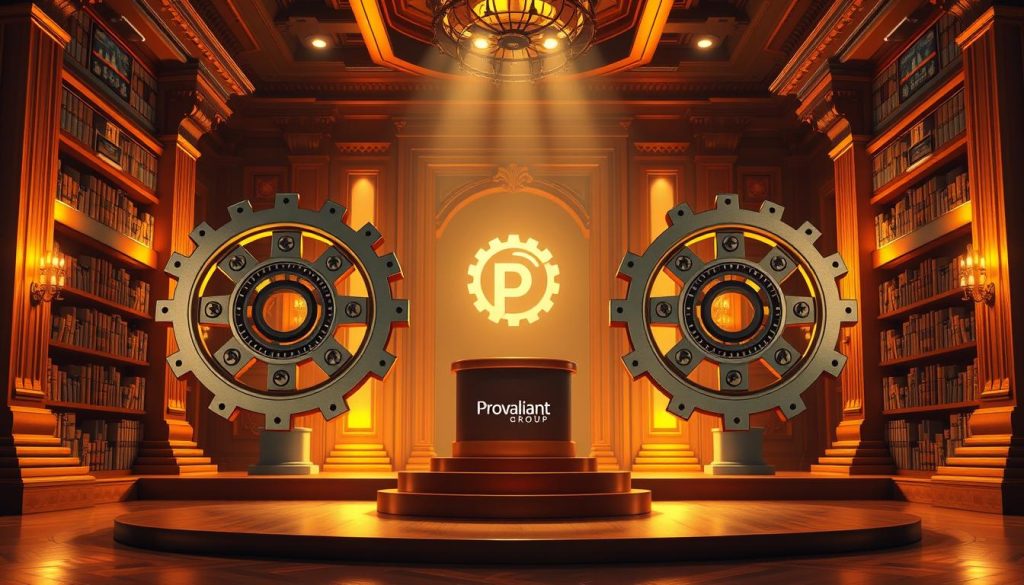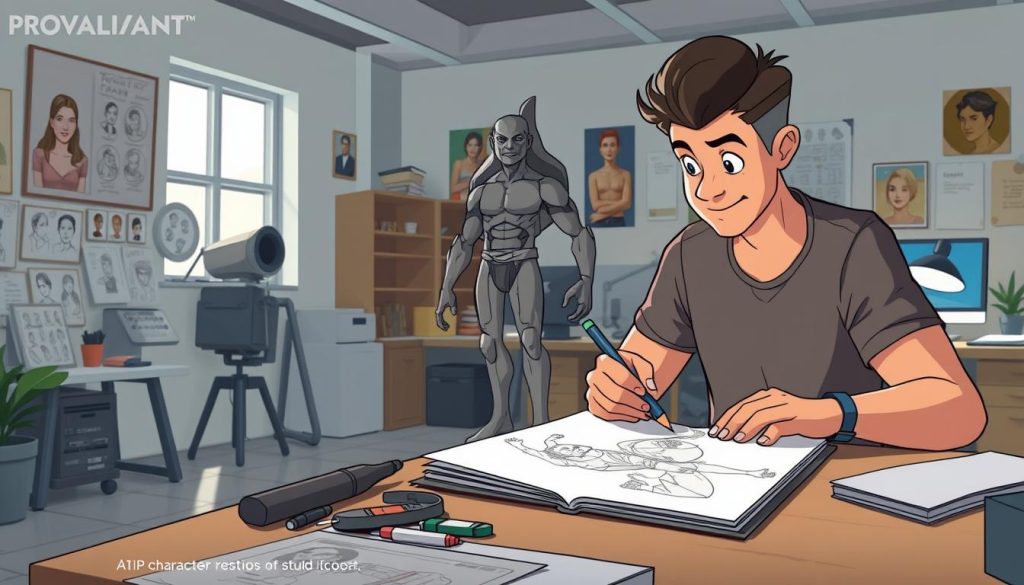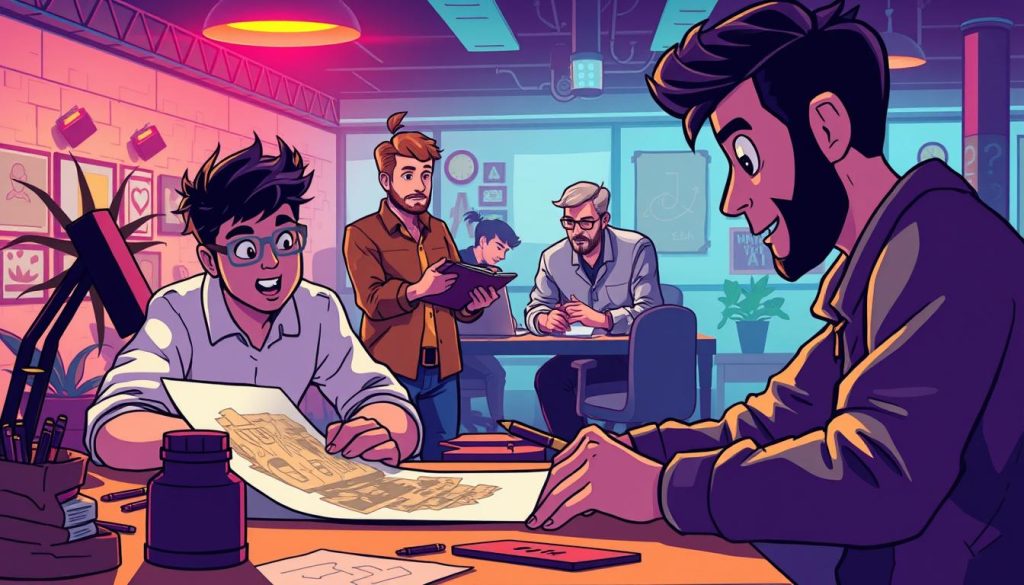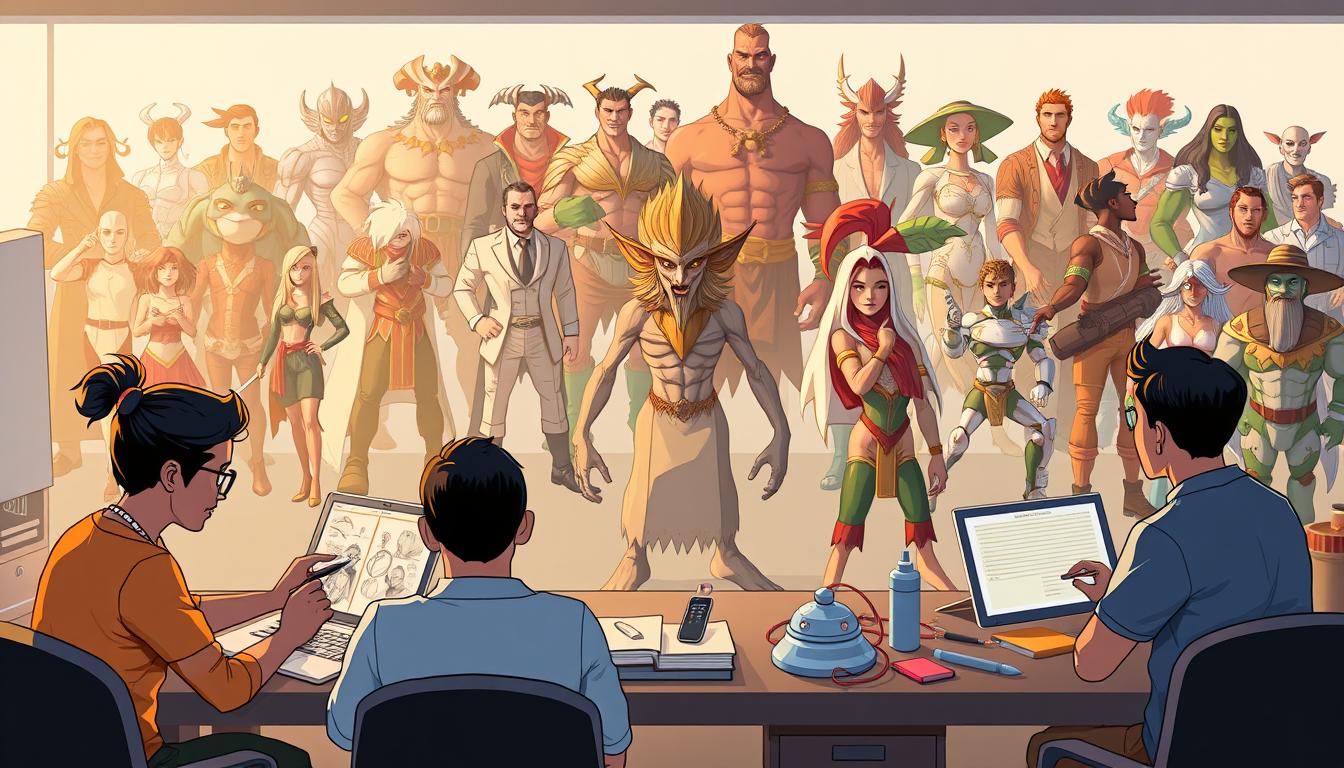Did you know 87% of Indonesian consumers prefer brands with recognizable mascots or icons? This staggering statistic reveals why businesses across industries are racing to develop unique fictional personas that resonate deeply with audiences. At the heart of this trend lies a powerful opportunity: transforming creative concepts into legally protected assets that drive growth.
Provaliant Group Indonesia specializes in crafting distinctive brand icons that become synonymous with organizational values. Their team merges artistic vision with legal expertise, ensuring every design qualifies for intellectual property protection. These assets aren’t just eye-catching – they’re strategic tools for building emotional connections across generations.
Modern companies face fierce competition in capturing attention. A well-designed persona serves multiple roles: marketing catalyst, merchandise driver, and cultural ambassador. Through careful storytelling and trademark registration, Provaliant helps brands unlock characters that adapt to market shifts while maintaining core identity.
Key Takeaways
- Fictional personas can become valuable assets when legally protected
- Proper registration prevents unauthorized use by competitors
- Cross-platform adaptability increases marketing opportunities
- Emotional engagement drives customer loyalty and recall
- Expert guidance ensures cultural relevance and legal compliance
From initial sketches to licensing strategies, Provaliant’s comprehensive approach turns creative ideas into enduring brand symbols. Their solutions help Indonesian businesses thrive locally while laying foundations for global expansion. The result? Characters that evolve with organizations, creating lasting impressions in an ever-changing marketplace.
Understanding IP Character Creation

The journey from artistic vision to legally protected asset begins with strategic design. These unique personas combine storytelling with legal frameworks, transforming imaginative ideas into marketable symbols. Businesses gain exclusive rights to every aspect – from personality traits to visual quirks – building assets that outlive temporary trends.
More Than Just Drawings
Distinctive personas become business ambassadors when developed properly. They carry brand values through memorable voices, gestures, and histories. This depth turns them into emotional bridges between companies and customers, fostering loyalty that simple logos can’t achieve.
Guarding Creative Investments
Legal protection transforms art into valuable property. Through proper registration, brands secure exclusive use across all platforms – physical products, digital spaces, and emerging technologies. This security encourages innovation while preventing copycats from diluting a symbol’s impact.
Indonesia’s growing digital economy makes these protections vital. Viral potential multiplies when fictional personas resonate culturally while maintaining legal uniqueness. Brands that master this balance create timeless assets adaptable to future market shifts.
The Importance of Intellectual Property in Character Design

What separates fleeting trends from timeless icons? Legal safeguards transform imaginative designs into valuable assets. Without proper protection, even the most beloved personas risk becoming diluted or exploited by competitors.
Why Protection Matters
Robust legal frameworks ensure creative efforts yield lasting rewards. Copyright and trademarks act as shields against imitation, allowing brands to:
- Maintain exclusive commercial rights
- Prevent revenue loss from counterfeits
- Build recognizable identities across markets
Global Success Stories
Leading companies demonstrate how strategic safeguards work. These cases reveal patterns of effective brand defense:
| Character | Challenge | Protection Method | Result |
|---|---|---|---|
| Mickey Mouse | Unauthorized merchandise | Copyright renewals | 94% counterfeit reduction |
| Hello Kitty | Counterfeit products | Global trademark filings | $800M annual sales secured |
| Tony the Tiger | Imitation mascots | Visual trademark registration | 15+ copycats blocked |
| Geico Gecko | Similar insurance mascots | Combined copyright-trademark strategy | 100% imitation prevention |
Disney’s iconic mouse faced over 200 infringement cases since 1928. Their aggressive renewal strategy kept control as laws evolved. Sanrio’s Hello Kitty maintains 50,000+ licensed products through vigilant monitoring.
These examples prove comprehensive safeguards work best. Brands combining copyrights with trademarks adapt better to global market challenges. Proper planning turns fictional personas into enduring business advantages.
Getting Started: How to Brainstorm and Sketch Your Character

What transforms ordinary concepts into memorable icons? The answer lies in structured creative exploration. Teams begin by unleashing imagination through collaborative sessions where no suggestion gets dismissed – wild concepts often spark groundbreaking directions.
Brainstorming Techniques for Unique Ideas
Effective ideation combines freedom with focus. Try these methods:
- Mind mapping: Connect unrelated concepts visually
- Cultural deep dives: Explore Indonesian folklore or modern art trends
- Role reversal: “What would this persona carry in their bag?”
Gather inspiration from unexpected sources. A Balinese dance gesture might inspire movement patterns, while batik motifs could shape costume elements. Document every thought – even silly ones often contain hidden potential.
Developing a Preliminary Sketch
Initial drawings capture essence over perfection. Start with:
- Basic silhouette shapes
- Dominant facial features
- Signature accessories
Use quick, loose strokes to maintain energy. Details come later – this stage focuses on personality expression. Teams should review sketches collectively, identifying which versions best communicate core values.
Remember: Early drafts evolve through feedback. One Provaliant client revised their mascot’s posture 23 times before finalizing. Each iteration brings clarity, transforming rough concepts into relatable figures that audiences embrace.
Step-by-Step Process for IP Character Creation

Creating memorable brand icons requires a methodical approach that balances creativity with technical precision. Provaliant Group Indonesia’s proven framework transforms rough ideas into polished assets through nine carefully structured phases. This guide focuses on three critical stages that determine a persona’s market success.
Defining the Purpose and Objectives
Teams begin by establishing clear goals for their persona. Will it primarily drive merchandise sales? Represent corporate values? Effective designs answer specific business needs while resonating emotionally. One beverage company crafted a mascot to embody community spirit, resulting in 40% higher social media engagement.
Building Your Persona Digitally
After sketching, artists use tools like Adobe Illustrator to create vector-based versions. This stage allows testing different expressions and poses. A well-built digital model works equally well on billboards and mobile screens, maintaining clarity across platforms.
Incorporating Visual Details
The final polish separates good designs from iconic ones. Designers add strategic accents like signature color gradients or culturally-inspired patterns. These elements should tell stories – a tech startup used angular shapes to convey innovation, while a childcare service chose rounded forms for approachability.
Every decision in this process serves the ultimate goal: creating adaptable symbols that grow with brands. By methodically addressing each development stage, businesses craft personas that remain relevant through market changes and cultural shifts.
Crafting a Compelling Background Story

Every iconic figure needs a story that sticks. Like roots nourishing a tree, a persona’s backstory gives depth to its actions and decisions. This foundation transforms marketing tools into relatable beings audiences cheer for.
Aligning the Story with Brand Values
Great narratives mirror a company’s heartbeat. A Jakarta-based tea brand drew from Indonesian folklore for their mascot’s origin, weaving traditions into modern values. Teams should ask:
- What struggles shaped our brand’s journey?
- Which principles guide daily operations?
- How can these elements shape the persona’s worldview?
One financial service gave their owl mascot a backstory of overcoming economic hardships. This mirrored their mission to help families achieve stability, boosting trust by 34% in surveys.
Enhancing Emotional Connection with the Audience
Audiences remember feelings, not facts. A well-crafted history creates shared experiences. Consider adding:
- Relatable fears – like failing to protect loved ones
- Aspirations reflecting customer goals
- Cultural touchpoints from local traditions
Provaliant helped a childcare brand develop a guardian figure who lost their teddy bear as a child. This simple tale increased parent engagement by creating shared nostalgia. Stories work best when they spark recognition – “That’s just like me!” moments that build bridges between brands and communities.
Through thoughtful storytelling, personas become allies rather than advertisements. They carry messages with authenticity, turning casual buyers into lifelong advocates.
Testing, Feedback, and Iteration for Character Refinement

Audience feedback transforms rough concepts into polished icons ready for market success. This phase separates temporary ideas from enduring symbols by aligning designs with public expectations. Brands that skip this step risk launching personas that fail to connect.
Gathering Audience Insights
Effective testing uses multiple channels to capture diverse perspectives. Focus groups with Indonesian parents revealed a mascot’s eye shape affected trust levels by 28%. Teams should combine:
- Social media polls analyzing emotional reactions
- Prototype testing in local markets
- A/B comparisons of color schemes
One beverage company discovered their panda mascot’s posture felt intimidating through TikTok feedback. Quick adjustments boosted appeal across age groups.
Optimizing the Design Based on Feedback
Refinement turns insights into action while preserving core identity. A table shows common feedback types and strategic responses:
| Feedback Type | Source | Action | Result |
|---|---|---|---|
| “Eyes feel cold” | Jakarta focus group | Rounded iris design | +41% relatability |
| “Hard to recognize” | Instagram poll | Simplified silhouette | 3.2x recall rate |
| “Voice doesn’t match” | YouTube test video | Local dialect coaching | 87% approval |
Successful teams view feedback as collaborative fuel rather than criticism. Regular updates keep personas relevant as markets evolve. This process builds assets that grow with audiences rather than becoming outdated.
Licensing and Legal Protection for Your IP Character Creation
Legal safeguards transform creative assets into valuable business tools. Three types of intellectual property shields exist: copyrights, trademarks, and patents. Each serves distinct roles in defending brand identities while unlocking revenue streams through licensing agreements.
Understanding Copyrights, Trademarks, and Patents
Copyrights automatically protect original artistic works like character designs. Trademarks guard names, logos, and distinguishing features. Patents cover functional innovations – though rarely used for personas. A coffee chain’s mascot gained 360° protection through copyright (design) and trademark (name).
Indonesian law requires formal registration for trademarks. Without it, others could legally replicate your mascot. Proper safeguards prevent designs from entering the public domain prematurely. Disney’s mouse remains protected through strategic renewals.
Steps to Secure Your Brand Legally
Begin with comprehensive searches in Indonesia’s trademark database. File applications covering all potential uses – merchandise, apps, VR experiences. Monitor for infringements through automated alerts.
Update registrations every decade under local law. One snack brand avoided public domain issues by renewing their parrot mascot’s trademark early. Licensing agreements should specify allowed uses to maintain property control.
Remember: Consistent enforcement builds protection credibility. When a counterfeit toy line emerged, a Jakarta firm used trademark filings to remove 12,000 units from markets. Their swift action preserved the mascot’s uniqueness and market value.




